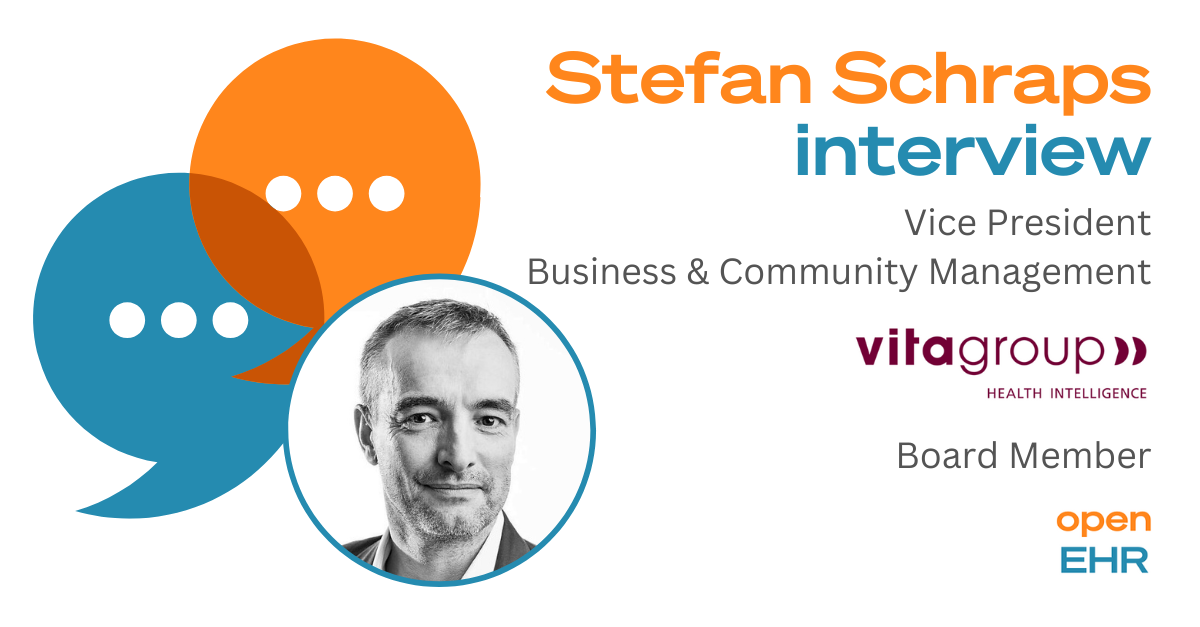Why did you choose openEHR? How has it evolved over the years?
When we first looked at openEHR more than five years ago in search of the right technology, it quickly became clear to us that this was the ideal choice as the foundation for our platform strategy. Only with openEHR could we achieve true semantic interoperability. What we noticed during our research, however, was that although it was the right technology, it lacked a community-capable open source distribution.
As we believe that every successful technology in the market is based on at least one open source distribution, at vitagroup made a conscious decision to actively address this issue. This was the birth of EHRbase. Today, we are proud to say that EHRbase has become the starting point for many openEHR projects and implementations.
What are the challenges of healthcare data interoperability? What are the solutions?
Currently, there are very few standards for data interoperability: only those for data exchange and integration standards have been established. In recent years if you wanted to transfer data from one system to another or needed the data for specific use cases, you had to contact the system manufacturers and get them to provide an API. This was tedious, often very expensive and, ultimately, not really effective: because in the end you normally had a working API, but it was typically tailored to a specific use case and was subject to changes made by the vendor. As a result, the number of interfaces became increasingly confusing, inefficient and cumbersome.
It quickly became clear to us that our healthcare system could not and should not exist in this way in the long term. We need fast and easy availability of data. Only when the data is available separately from the logic and application can a treasure trove of data be built up that can be used for the benefit of healthcare. The HIP CDR addresses exactly this point. The data is stored in our central data repository, independent of manufacturers and systems, enabling interoperable use across all systems.
How can your HIP CDR improve health care?
Having access to all relevant health data of a patient is crucial for making the best possible decisions regarding their medical history, diagnosis, and treatment. As I have already explained, this data is currently trapped in its vendor-dependent data silos. With the HIP CDR, we are liberating the data, making it usable and available for both care and research purposes.
In addition, we are convinced that those directly involved in healthcare – the people who actually work in care – know best what they need. They know their demands and what the applications they work with really need to do. Without our HIP CDR, these needs cannot be met since the choice of systems within an organisation, and even across organisations, has always been manufacturer dependent.
Our central, manufacturer-independent data repository opens up many new possibilities: It allows for the selection and replacement of best-of-breed systems as needed. It facilitates the quick and easy implementation of new supply applications. By separating the data from the application, it is easy to develop your own applications with a good user experience and a stylish front end
What successes have you had recently? What are you currently working on?
More and more hospitals are choosing to use our HIP CDR. We now also have university hospitals and hospital associations that are implementing their digitisation strategy based on HIP CDR.
On an international level, we recently won the contract with IBM and other partners to build the clinical data platform for Catalonia. In this collaborative project, we will create a fully comprehensive end-to-end data platform (based on the HIP CDR) that standardises and homogenises the electronic health record for the entire region of Catalonia, which has a population of over 7.5 million.
How has Germany developed in recent years in terms of digitalisation in the healthcare sector? How are you taking advantage of the opportunities?
The German government has made significant efforts in the field of digitalisation, with various initiatives focused on promoting interoperability and patient-centricity. One notable example is the KHZG (Hospital Future Act), which allows hospitals to take advantage of digitisation benefits and bring their facilities up to date. Within this context, many hospitals have realised that a long-term and robust digitalisation strategy can only be achieved with a manufacturer-independent CDR as its foundation.
What are some of the problems with the current healthcare data landscape, specifically in Germany?
Many of the new EU regulations on data protection and data security are interpreted very strictly in Germany. Although these requirements are the same for all EU countries, Germany’s strict interpretation hinders the realisation of the benefits that digitisation and data utilisation can bring to healthcare. In addition, the cooperation and collaboration of all healthcare providers and umbrella organisations is necessary to achieve a true digital transformation. Unfortunately, this is not yet the case here.
What are the benefits of being an openEHR industry partner?
openEHR, as a technological standard, cannot be driven and established by one entity or company alone. Only with partners that share the same vision and interests can you really make a difference. We are partners in a community that represents this vision. Our common goal, our philosophy, is to free data from manufacturer dependency. As an industry partner, we develop our solutions and products based on this vision. And in doing so, we also drive the openEHR standard forward.

Leave a Reply